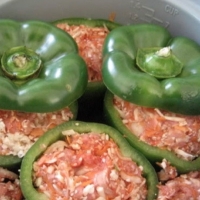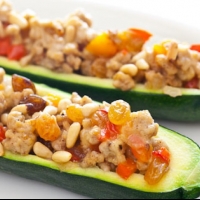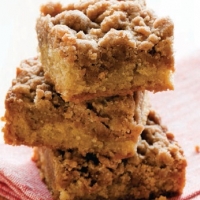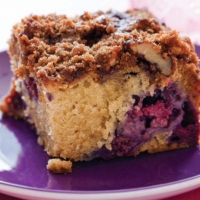Quick Recipes
Recipes Types


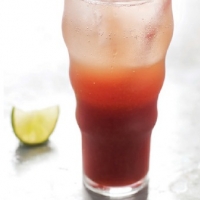
Quick Select
Basella or vine spinach is a popular tropical leafy-green vegetable commonly grown as backyard plant in the home gardens. In the true sense, it is different from english spinach (spinacea oleracea) in that the plant is a creeping vine, and its leaves feature glossy, broad, deep green, thick, and mucilaginous. Commonly found in the backyard gardens of many south asian families, it is gaining popularity in some of the tropical and temperate climates of america, australia and europe for its succulent, nutritious greens, and tender stems. Vine spinach belongs to the basellaceae family, and has two chief cultivars, basella alba, which features green-stems and deep-green leaves, and basella rubra with purplish-stems and deep-green leaves with pink veins.
Vine spinach is noted by regional names in different regions in asia. Some of the common names for this herb are ceylon spinach, malabar spinach, saan choy (chinese), mong toi (vietnamese), alugbati (philippines), pui saag (bengali), remayong (malay), etc. It is native to south asia, probably originated in the monsoon fed tropical regions of malabar coast of india and sri lanka.
The plant is a perennial vine and grown as annual or biennial pot-herb. It prefers hot humid climate and moist, fertile, well-drained soil to flourish. Although, its seeds can be sown directly for planting, usually thick cuttings about the length of 20 cm are preferred for easy propagation, and fast growth. Being a vine, the plant requires trellising for its spread at a faster rate. It bears white or white-pink color tiny flowers depending upon the species and deep-purple to black color berries.
Basella alba bears thick, fleshy, broad, oval to heart-shaped leaves all along its vine length. Basella rubra features pink or purplish stems and pink color veins running in the leaves. In either case, leaves and terminal tender, 8-12 inches stems are ready for harvesting about 35 to 45 days after planting (about 50 days after seeding).
Health benefits
Basella is one of versatile leaf green vegetable and revered in some east asian cultures for its wholesome phyto-nutrients profile.
Basella is very low in calories and fats (100 g of raw leaves provide just 19 calories). Nonetheless, it holds an incredibly good amount of vitamins, minerals, and antioxidants.
Fresh leaves, particularly of basella rubra, are rich sources of several vital carotenoid pigment anti-oxidants such as b-carotene, lutein, zea-xanthin. Together, these compounds help act as protective scavengers against oxygen-derived free radicals and reactive oxygen species (ros) that play a healing role in aging and various disease processes.
Its thick, fleshy leaves are a good source of non-starch polysaccharide, mucilage. In addition to regular fiber (roughage) that found in the stem and leaves, mucilage facilitates in smooth digestion, bring reduction in cholesterol absorption, and help prevent bowel movement problems.
Vine spinach leaves and stem are incredibly rich sources of vitamin a. 100 g fresh leaves provide 8000 iu or 267% of recommended daily allowance (rda) of this vitamin. Vitamin-a is required for maintaining healthy mucus membranes and skin, and essential for good eye-sight. Consumption of natural vegetables and fruits rich in vitamin-a, and flavonoids has been thought to offer protection from the lung and oral cavity cancers.
Basella has more vitamin c content than english spinach. 100 g of fresh greens contains 102 mg or 102% of daily recommended levels of vitamin c. Vitamin-c is a powerful antioxidant, which helps the body develop resistance against infectious agents and scavenge harmful oxygen-free radicals.
Likewise in spinach, basella too is an excellent source of iron. 100 g fresh leaves contain about 1.20 mg or 15% of daily intake of iron. Iron is an important trace element required by the human body for red blood cell (rbc's) production. Additionally, this element acts as a co-factor for oxidation-reduction enzyme, cytochrome-oxidase, during the cellular metabolism.
It also contains good amounts of many b-complex vitamins such as folate, vitamin-b6 (pyridoxine), and riboflavin. 100 g fresh leaves provide 140 ag or 35% of folates. This vitamin is one of the essential compounds for dna production and growth. Folate deficiency in during very early stages of pregnancy might results in the neural tube defects in the newborn baby. Anticipating and pregnant women are therefore, advised to include a lot of fresh greens in their diet to help prevent neural tube defects in the offspring.
Further, basella leaves are good sources of minerals like potassium (11% of rda/100 g), manganese (32% of rda/100 g), calcium, magnesium, and copper. Potassium is an important component of cell and body fluids that helps controlling heart rate and blood pressure. Manganese and copper are used by the body as a co-factor for the antioxidant enzyme, superoxide dismutase.
Akin to spinach, regular consumption of basella (malabar spinach) in the diet helps prevent osteoporosis (weakness of bones), iron-deficiency anemia. Besides, it is believed to protect the body from cardiovascular diseases and cancers of colon.
Notice
The information and reference guides on this website are intended solely for the general information for the reader. It is not to be used to diagnose health problems or for treatment purposes. It is not a substitute for medical care provided by a licensed and qualified health professional. Please consult your health care provider for any advice on medications










